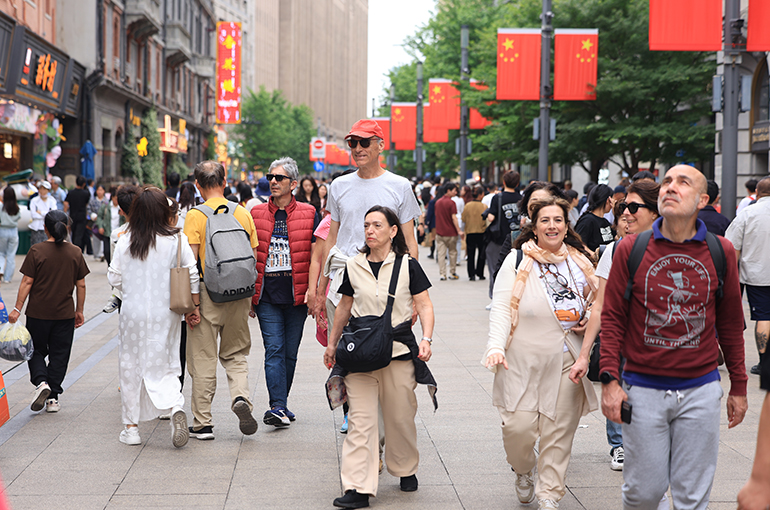 Consumer Spending in Shanghai Climbs 13.1% During Labor Day Holiday
Consumer Spending in Shanghai Climbs 13.1% During Labor Day Holiday(Yicai) May 6 -- Consumers in Shanghai spend 13.1 percent more during this year's five-day Labor Day holiday than a year earlier, with more inbound tourists and a boost from relevant support measures.
Shanghai's online and offline consumption topped CNY59.5 billion (USD8.2 billion) from April 30 through May 4, according to data from the Consumer Market Big Data Laboratory Shanghai. Online spending rose 12.9 percent to CNY26.3 billion and offline 13.2 percent to CNY33.2 billion.
The Labor Day holiday ran from May 1 through yesterday, with the lab under the Ministry of Commerce gathering its data from 35 commercial districts, which saw the number of visitors jump 12.8 percent to 29.9 million.
Overseas tourists visiting Shanghai spent CNY455 million (USD62.6 million) during the Labor Day break, a surge of 212 percent from a year earlier, according to data by the city. Sales at departure tax refund stores surged 1.2 times, with refunds soaring 1.3 times.
China introduced several measures to optimize payment convenience for foreign tourists, including lowering the minimum purchase amount for tax refunds from CNY500 to CNY200 (USD68.75 to USD27.50). Shanghai, one of the pilot cities for the departure tax refund policy, has 1,013 registered businesses participating in the program, covering more than 3,300 merchants.
In addition, subsidies offered to boost consumption during Shanghai's annual May 5 shopping festival positively affected holiday spending. About 1,000 offline businesses with around 6,000 stores and 13 e-commerce platforms offered subsidized home appliances, furniture, and 3C (computers, communications, and consumer) electronics, with relevant sales soaring 32 percent to CNY1.2 billion (USD165 million).
Spending at restaurants in Shanghai also increased, with dine-in shop transactions climbing 9.8 percent and those by out-of-town tourists surging 37 percent, according to data from on-demand services giant Meituan. Consumer vouchers led to sales of gold and jewelry doubling in key commercial districts and boosted sales of clothing, footwear, daily necessities, and cosmetics brands.
Editor: Martin Kadiev